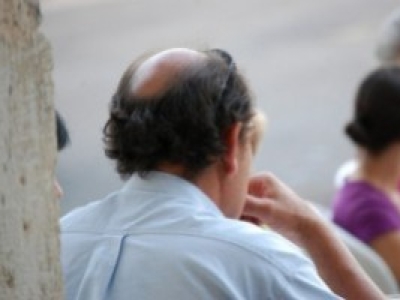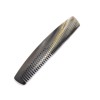How to distinguish normal and abnormal hair loss, temporary and permanent hair loss?
 The hair has a cycle of life more or less short or long depending on the people, from 2 to 6 years. They are renewed little by little, every day. It is therefore normal to lose hair every day. The abnormal hair loss is called by doctors "alopecia".
The hair has a cycle of life more or less short or long depending on the people, from 2 to 6 years. They are renewed little by little, every day. It is therefore normal to lose hair every day. The abnormal hair loss is called by doctors "alopecia".
- A normal person loses about 50 hairs a day.
- It is estimated that up to 100 hairs a day, the fall is not abnormal.
- You have to worry if you lose more than 100 hairs every day.
- Also worry if one or more plates without hair appear (it can be a skin disease)
- It can happen to lose abnormally hair after a psychological shock, intense stress for the body (mourning, intense fear, but also disease with high fever or heavy drug treatment). In this case, the hair falls 2 to 4 months after the appearance of the cause, but they grow back in about 6 to 12 months.
What are the causes of abnormal hair loss?
- The most common cause of hair loss is andro-genetic alopecia, or male pattern baldness. In this case, the man first loses his hair above the temples, there may be a phenomenon of tonsure (baldness at the top of the skull)
- In women, androgenetic alopecia also exists. In this case, it is often accompanied by an abnormal growth of hair on other areas of the body. It corresponds to a hypersensitivity to male hormones naturally present in the body, during periods of hormonal modification: during menopause, but also after childbirth or after stopping a contraceptive pill. Hair loss then touches the top of the head in a diffuse way.
- Some skin diseases can also cause alopecia. In this case, most of the time, hair loss is done by round or oval plates, more or less regular. This is called alopecia areata. In principle and except in special cases, when the infection is conquered, the hair repels. An emotional shock (death of a loved one, intense fear) can cause hair loss. The hair falls two to four months after the event. They take 6 to 12 months to repel.
- Some drugs (chemotherapy): in this case, the hair normally regrow within months of stopping treatment
- Trichotillomania (hair pulling tic): this often corresponds to a deeper psychological malaise, to take into account. If the hair is torn by too violent pulls, it can in the long run damage the hair bulb, and prevent regrowth of hair.
- Excessive hair care (tight hairstyles, brushing, coloring, perms, iron straightening, excess heat ...): be careful because hairstyles too tight and repeated (buns, braids or mats worn every day) or too violent pulling of the hair can permanently damage the hair bulb and prevent regrowth of hair.
Who to consult?
- The hairdresser can help determine an excessive or normal fall of hair, make a haircut intended to give them a more aesthetic appearance while waiting for the effects of the care.
- The general practitioner can refer to a dermatologist if needed, or give the appropriate treatment.
- The dermatologist is the specialist of the skin. It is therefore best to diagnose the cause of excessive hair loss (for health insurance, you must have consulted the GP before)
- The scalp surgeon is indicated for further investigation and to determine if the hair implant is indicated.
- The psychologist can also help solve a problem of trichotillomania, but also to help overcome the psychological malaise that can cause an abnormal hair loss. This aspect should not be neglected because the hair has an important symbolic strength, beauty, or power.
How to prevent hair loss, how to cure?
- The first thing to do is not to impose bad treatments on the hair. There is no need to shampoo every day except in some cases: hairdressers are good advice. Attention also to friction, hair pulls. Leave the hair free periodically.
- To avoid pulling hair when styling, use a horn comb and a natural boar bristle brush (be careful, the brushes sold often include a mixture of boar bristles and nylon threads). Protect the hair roots with the fingers in case of strong traction.
- The disentangling is important to aerate the hair and avoid the accumulation of bacteria or fungi, which can be the cause of hair loss.
- Lotions and vitamins may be prescribed by the doctor if the regrowth needs to be stimulated
- For cases of definitive alopecia (the hair does not grow back), the surgery makes it possible to implant new hair on the affected areas thanks to a hair transplantation. It involves taking hair from other parts of the head and grafting it onto the affected area. The intervention is not very heavy and does not require more than a short day (it lasts about 2 hours), it is not or little painful. However, depending on the number of hair to implant, it may take several sessions (1 to 3 sessions in general).
- There is a management of definitive alopecia by social security, especially for women, for which it can have significant repercussions. Do not hesitate to inquire about the conditions with your health insurance fund, or your doctor.

